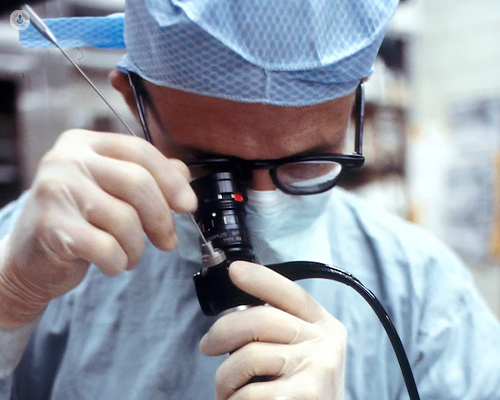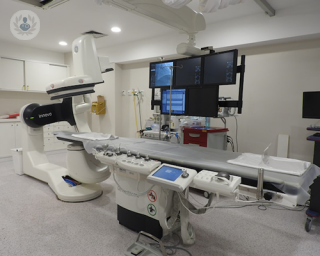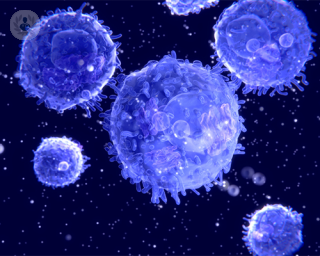Bladder cancer
What is bladder cancer?
Bladder cancer is a relatively common type of cancer, which involves the growth of abnormal tissue (a tumour) in the bladder tissue. Bladder cancer is often described by how far it has moved into the bladder wall. It can either be non-invasive or invasive.
Non-muscle invasive bladder cancer is the most common type, in which the cancerous cells are contained within the tissue that lines the bladder. Fatalities from this kind of bladder cancer are uncommon.
Muscle invasive bladder cancer – cancerous cells spread beyond the lining of the bladder and into the bladder muscle that surrounds it. This type is es common but more serious, as it increases the chance that the cancer will spread to other parts of the body (metastasis).

Types of bladder cancer
There are various different types of bladder cancer. The most common is urothelial bladder cancer, also known transitional cell bladder cancer (TCC). If diagnosed with bladder cancer, it is likely to be urothelial bladder cancer.
Some rarer types of bladder cancer are squamous cell bladder cancer, adenocarcinoma, sarcoma and small cell bladder cancer.
What are the symptoms of bladder cancer?
Bladder cancer can cause the following symptoms:
- blood in the urine (haematuria) – the most common symptom
- frequent urination
- sudden urge to urinate
- burning sensation when urinating
In some more advanced cancers, the patient may also experience:
- back pain
- pelvic pain
- unintentional weight loss
- swelling in the legs
If you are experiencing urinary symptoms, you should consult your doctor or a specialist.
How is bladder cancer diagnosed?
If you show symptoms which indicate you have bladder cancer, your doctor may carry out various tests in order to diagnose this. Possible tests include:
- X-ray
- CT Scan
- MRI
- Ultrasound
Additionally, a cystoscopy, a procedure which looks inside the bladder by inserting a thin tube with a camera and a light called a cystoscope through the urethra, may also be performed. Alternatively, a blue light cystoscopy may be carried out, in which special drugs may be inserted which cancer cells absorb, then glow when the camera is inserted. The blue light may be able to detect cells that the normal light cannot.
The most comprehensive test for suspect bladder cancer is a bladder biopsy, in which a cystoscope takes a very small piece of the bladder, referred to as a sample. In some cases, more than one sample is taken. Additionally, salt water washings from the inside of the bladder may be collected in order to check for cancer cells. All samples will be sent a lab to be tested for cancer.
Physical exams are also sometimes performed, where the doctor checks for signs of bladder cancer and other health problems. This may involve a rectal exam or a pelvic exam. Urine tests may also be carried out which look for blood, cancer cells or proteins called tumour markers in the urine. Bone tests also assess if cancer has spread to the bones.
Causes of bladder cancer
It isn’t always clear what causes cancer, but the following factors, among others, are thought to increase the risk of bladder tumours:
- Smoking – the leading factor seems to be tobacco, which contains carcinogenic chemicals
- Exposure to chemicals – certain industrial chemicals, such as aniline dyes and xenylamine are known to increase the risk of bladder cancer
- Past radiation exposure – this includes radiotherapy used to treat previous cancer, such as in the bowel
- Having been previously treated with anti-cancer drugs, including Cyclophosphamide or Ifosfamide
- Long-term or repeated irritation, or urinary tract infections, such as cystitis - some UTIs are linked to long term use of urinary catheters
Risk factors for bladder cancer
Alongside the factors listed above, risk factors for bladder cancer include the following:
- Being over the age of 55
- A family history of bladder cancer
- Having particular changes in the genes that are linked to bladder cancer
- Drinking water from a well containing high levels of arsenic
- Drinking water which has been treated with chlorine
Are all bladder tumours cancerous?
The majority of bladder tumours are cancerous, however, this is not always the case. Some of these tumours remain benign. Some benign tumours are similar in appearance to malignant tumours therefore it is essential to undergo a biopsy to determine the state of the tumour.
How serious is my cancer?
There are tests which can be carried out to check the invasiveness, grade and stage of cancer. Once the doctor knows these different aspects, they can determine the best manner to treat cancer.
Invasiveness
Tests can indicate the depth of which cancer has developed into the bladder wall. As mentioned above, if it remains within the inner walls of the bladder, without growing into the outer layers, it is non-invasive. If it grows into the outer layers of the bladder, it is invasive. Invasive cancers spread more easily and are often more difficult to treat.
Grade
Grade refers to how cancer appears under the microscope. Low-grade bladder cancers look very similar to normal bladder cells. They usually grow and spread slowly. High-grade bladder cancers look less similar to normal bladder cells. They are more likely to grow and spread and may be harder to treat.
Stage
The stage refers to the growth or spread of the cancer in the place it started. Additionally, it tells if the cancer has spread to other organs of your body that are close by or farther away.
Cancer can be stage 0, 1, 2, 3, or 4. The lower the number, the less the cancer has spread. A higher number, like stage 4, signifies that a more serious cancer that has spread from where it began.
Treatment
Once diagnosed, bladder cancer is treated by a multidisciplinary team, which may include a urologist, a pathologist, a clinical oncologist, and a radiologist, among others.
Depending on the stage of the cancer and the risk it poses to the patient, different treatments can be given. One or more of the following treatments may be recommended, depending on the stage, invasiveness and grade:
- transurethral resection of a bladder tumour (TURBT)
- chemotherapy
- cystectomy (surgery to remove the bladder)
- radiotherapy
- immunotherapy
- intraversical chemotherapy
Sometimes more than one type of treatment is given. The best treatment plan for you that’s depends on:
- The stage and grade of the cancer
- The invasiveness of the cancer
- The chance that a particular treatment will cure the cancer or help in any way
- Any other health problems that you have
- How you feel about the treatment and its side effects

















